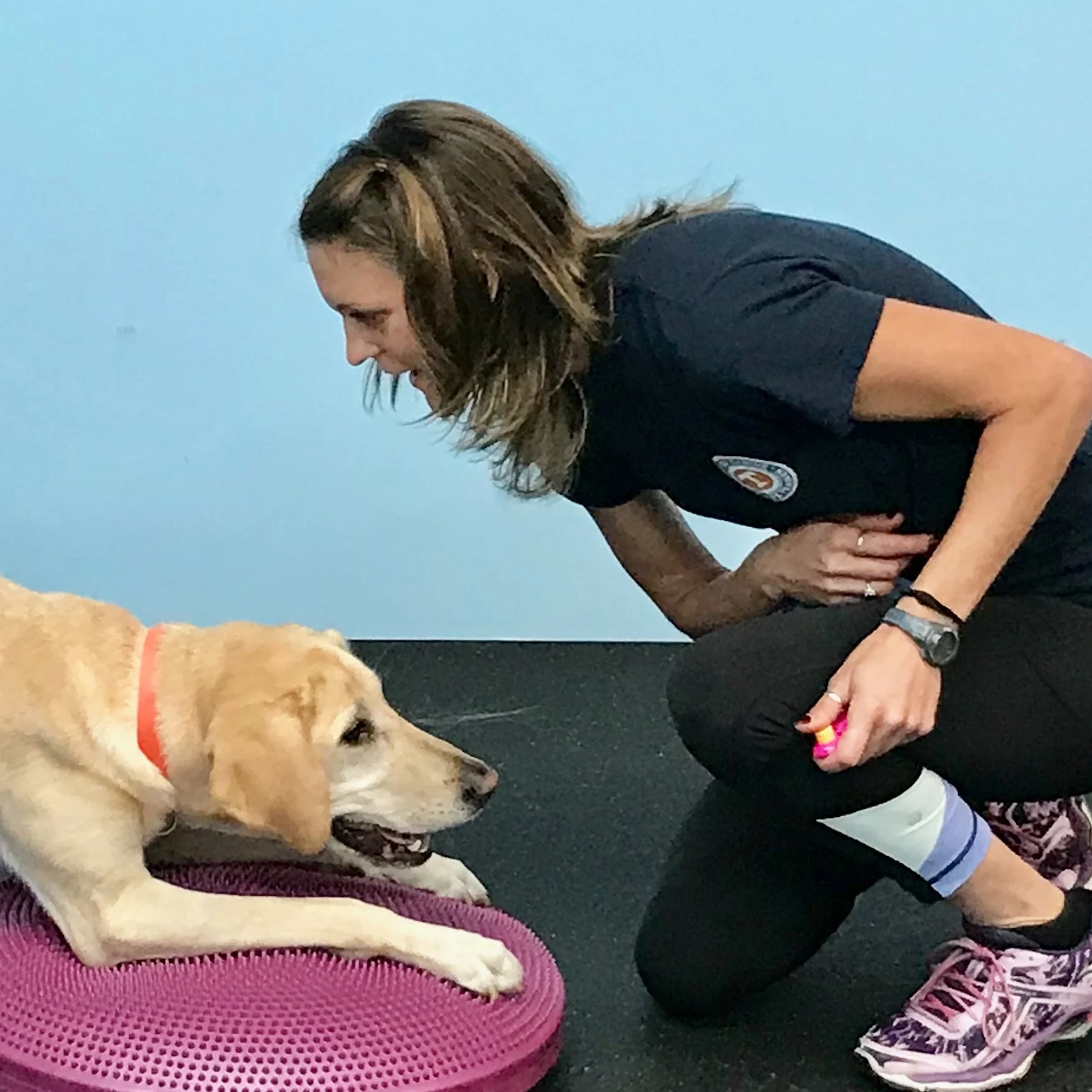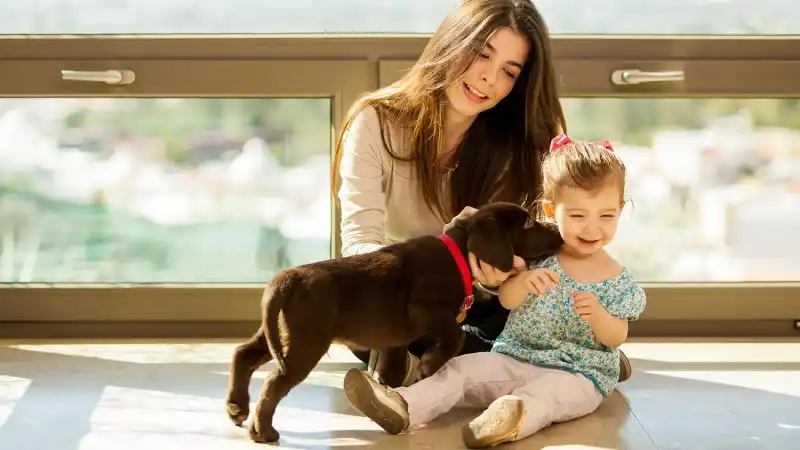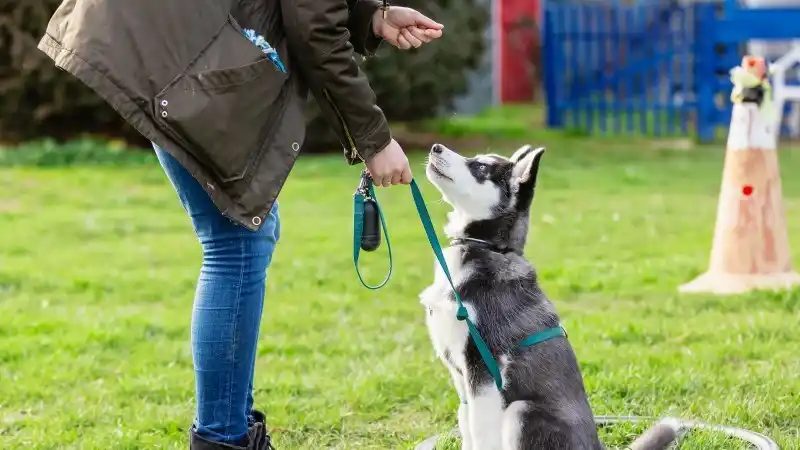Treadmill Training for Dogs
Treadmills for dogs are a great solution for keeping your pet active indoors. Check out the exercise benefits of treadmill training your dog at home!

Why would someone train a dog to walk and trot on a treadmill?
“Treading” dogs can maintain fitness when the weather is bad, their owners are injured or away from home, or their behavior restricts them from outdoor exercise.
Some dogs recovering from surgeries or undergoing physical therapy can also benefit from treadmill work under the direction of a veterinarian. What’s more, obese dogs can lose weight with the help of a treadmill. Many dog owners even prefer to have their pets exercise in the safety of their home, instead of at overcrowded dog parks.
Service dogs can also benefit from training on the treadmill, especially if their owners are incapable of providing them with outdoor exercise.
How long does it take to train a dog to use a treadmill?
Dogs learn at different paces, so the time frame varies. Keep your dog happy and relaxed during training sessions, keep sessions short, and end them on a positive note, using treats along the way to help ensure success. Many dogs take a few steps the first session or within a week of intermittent, multiple sessions. Others are confidently trotting for 5-15 minutes after a few weeks!
How do you treadmill train a dog?
Start with the treadmill turned off. Guide your dog to the back of the treadmill and have them jump on the belt and walk to the front. Give your dog several treats for standing near the front of the treadmill. Turn your dog around and have them walk to the back of the treadmill to exit.
Repeat this drill a few times and specifically feed treats while the dog is on the treadmill – this is important so your dog associates being on the treadmill (not leaving) with a positive experience! On occasion, have your dog exist via the side of the treadmill (if the side enclosure rails are removed), so your dog knows that they can exit to the side if they lose their balance or get fatigued.
Next, when your dog is off the treadmill, turn the treadmill on and let your dog hear it running. You may use treats or praise to reward your dog for accepting the hum of the treadmill. Turn the treadmill off.
Walk your dog to the rear of the treadmill, get on it, and walk to the front. Turn the treadmill on very low, such as 0.5 mph, and give your dog a few treats as long as they stay on the belt during the movement. Encourage your dog to take a few steps. Stop the treadmill. Treat your dog while they are facing forward on the treadmill and then have them exit the treadmill at the rear. Repeat a few times and ask your dog for a few more steps each time. Use lots of praise and positive reinforcement.
Over time, you can increase the speed and the walking or trotting time period. Start with a few seconds and build up to sessions of 3 minutes. Most dogs will walk at about a 2 to 2.5 mph pace and many dogs will trot at a 2.5 to 5 mph pace.
If you need a professional to help you improve, find a Certified Canine Fitness Trainer (CCFT) in your area to help you with a few private lessons.
Can dogs use a human treadmill or do they need a pet treadmill?
Although a human treadmill may work for smaller dogs, larger dogs will generally need to use a treadmill that has a longer belt (or “bed”) surface. If the belt surface is too short for your dog, this may affect their gait and force them to take steps that are too short and unnatural, which could cause muscle and joint discomfort or injuries.
The belt surface should generally be about 2 to 2.5 times the length of the dog. Manufacturer recommendations suggest another method to determine the needed length: try measuring the length of your dog’s body (when your dog is lying on their side with their legs gently extended) and then add 10 inches.
Dog exercise treadmills are often built to accommodate dogs' special needs, with features like removable side enclosures, durability, an out-of-reach console, and even treat bowls at the front panel. Dog treadmills may also be built to minimize noise and vibrations based on the dog’s motion.
Human treadmills lack these important dog-friendly features and have a wider belt to accommodate wider human hips. One popular brand of treadmills for pet owners is dogPACER. Rehabilitation and veterinary clinics may purchase more expensive treadmills that have more incline and decline options.
But, if you don’t have the money for a high-end, vet clinic-grade dog treadmill, there are plenty of other brands well within most price ranges. Firepaw is one option, and it’s entirely mechanical, meaning it will never force your dog to run or walk. This is an excellent feature for dogs who have a lot of energy to burn off, but is also ideal for dog owners who feel it may be unfair or unkind to force their dog to run at a pace outside of their control.
What else should I know about dog treadmill training?
Dogs should not go above a trot. You don't want your dog running on the treadmill.
Dogs should not be leashed to the treadmill – dogs could get tangled or be unable to exit safely if a sudden exit is needed.
Some dogs cannot chew and walk or trot, so watch your dog to see if they are able to take treats while on the treadmill. Beware that any dropped treats could cause your dog to stop walking and dive after them.
A dog fading to the end of the treadmill is tired – slow the treadmill down so your dog can walk and cool down and then end the session.
As always, be sure to consult your veterinarian when implementing variations to your dog’s fitness routine.
Take some of the stress out of pet ownership with Accident & Illness Coverage from AKC Pet Insurance (underwritten by Independence American Insurance Company). Our pet insurance plans are designed to be there when you need them, allowing you to focus more on the health of your pet and less on costly veterinary bills. Click here for a quote today!

Jasey Day holds the Certified Canine Fitness Trainer (CCFT) credential through the University of Tennessee. She is a member of the Bobbie Lyons K9FITteam - a team of compassionate canine fitness instructors who actively teach others and continually expand their own knowledge. Since 2004, Jasey has taught a variety of workshops and classes on the following: Puppy, Canine Good Citizen/Family Pet, Advanced Family Pet, Canine Fitness, Canine Swimming, Rally, and Agility. In addition, Jasey has earned over 60 titles in Dock Diving, Agility, Rally, CGC and Trick Dog. Jasey has worked full time for the American Kennel Club since 2007 and teaches at Care First Animal Hospital in Raleigh, NC. Jasey’s Labrador Retrievers spend their free time hiking, training, and snuggling with Jasey.
READ MORE ARTICLES

